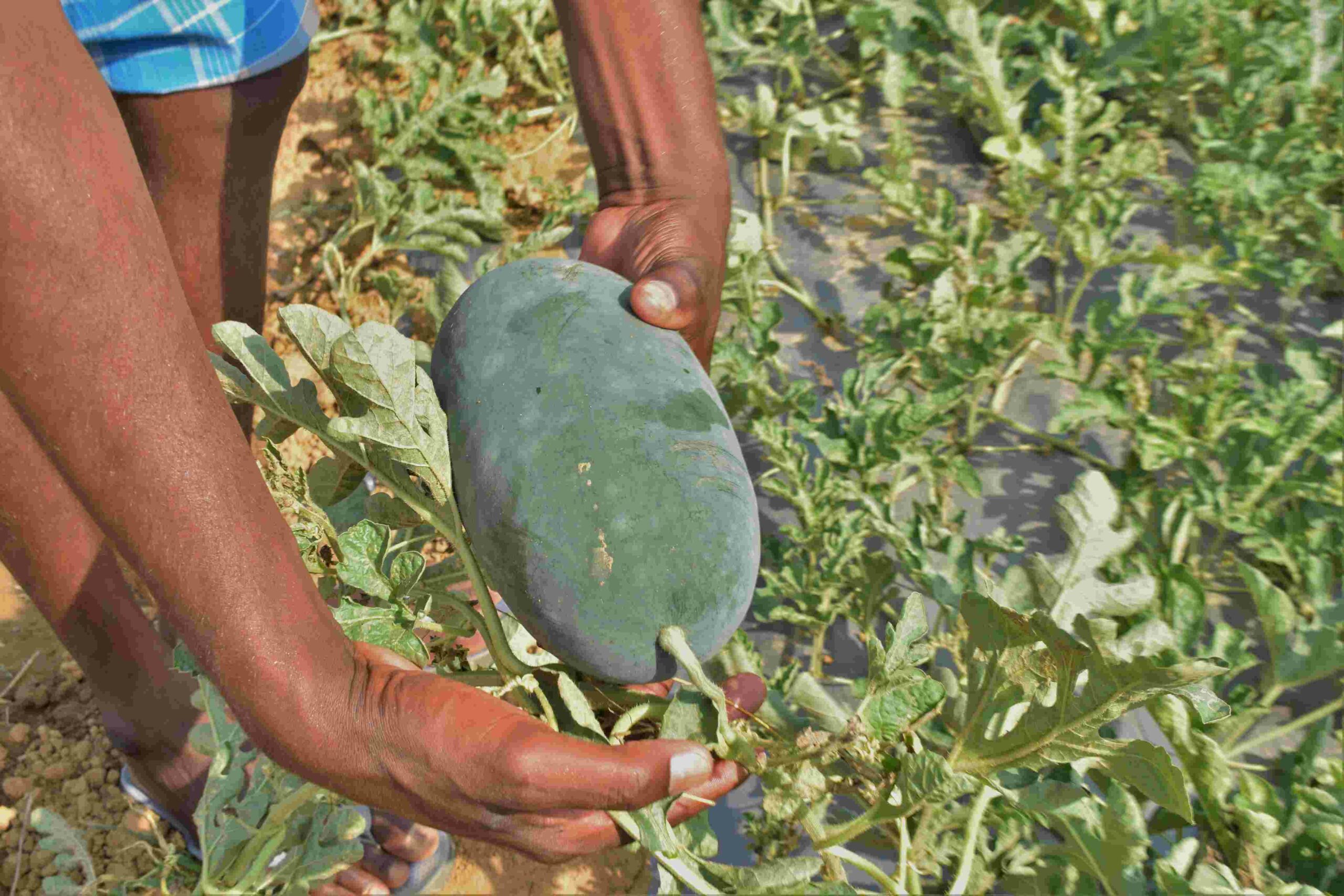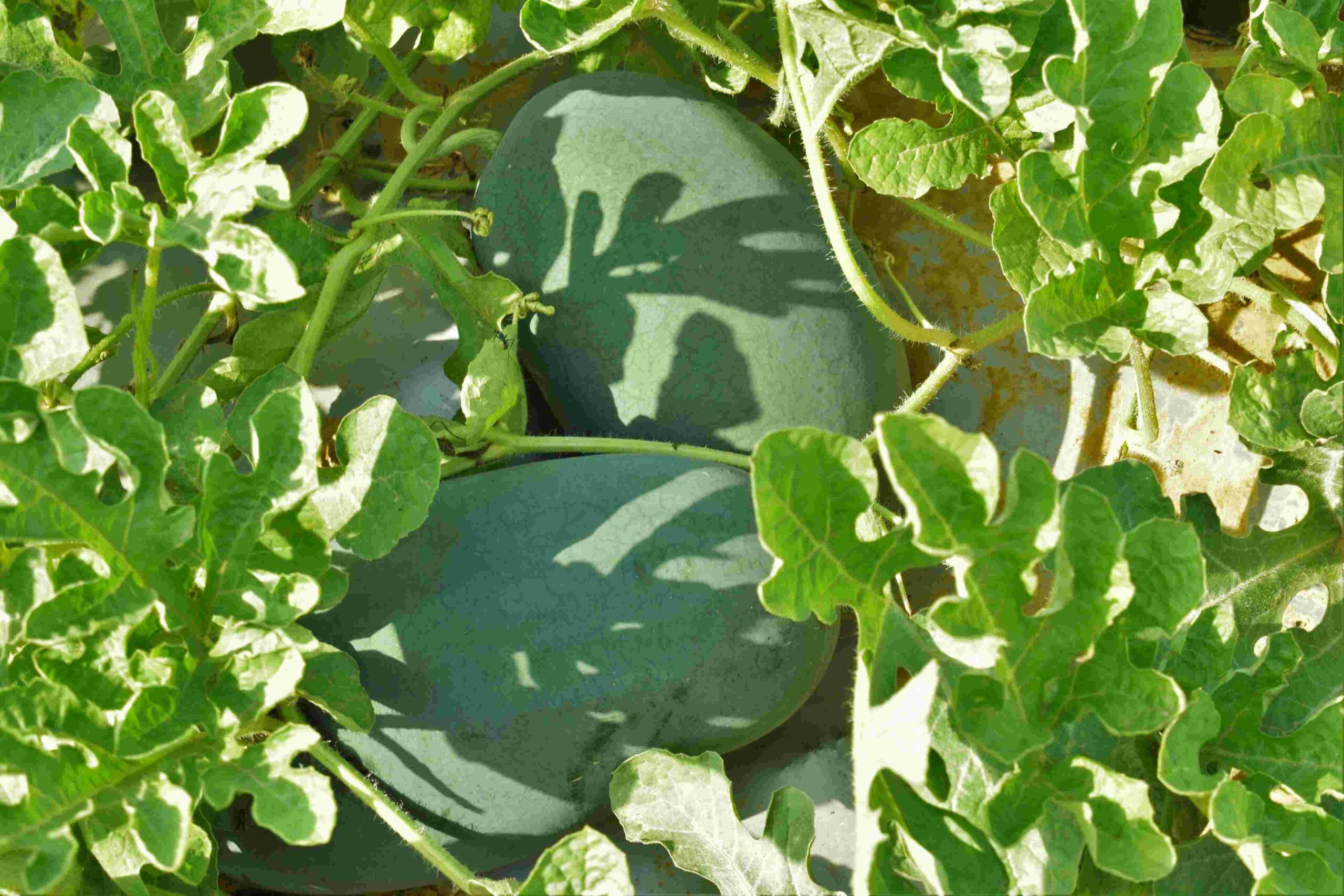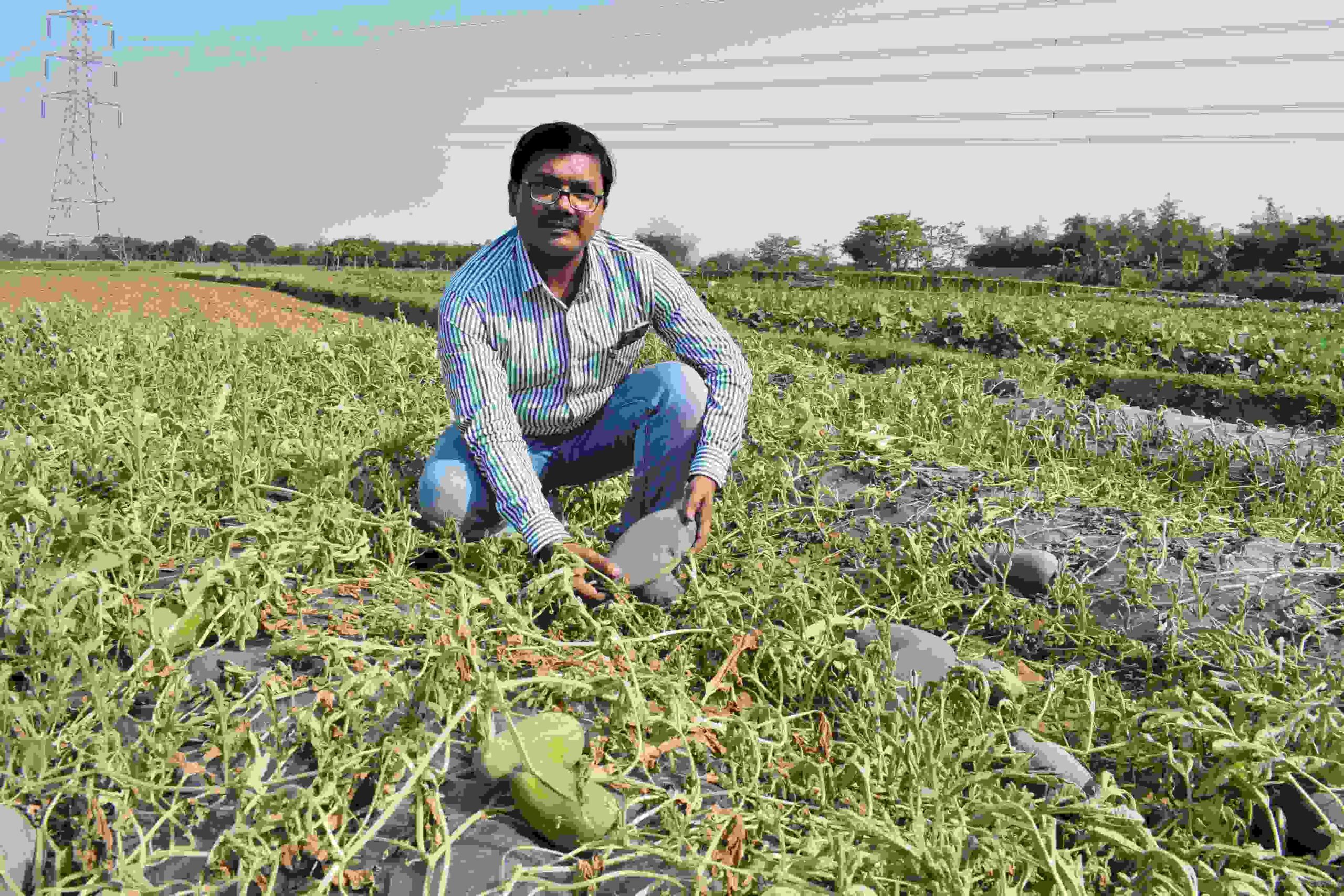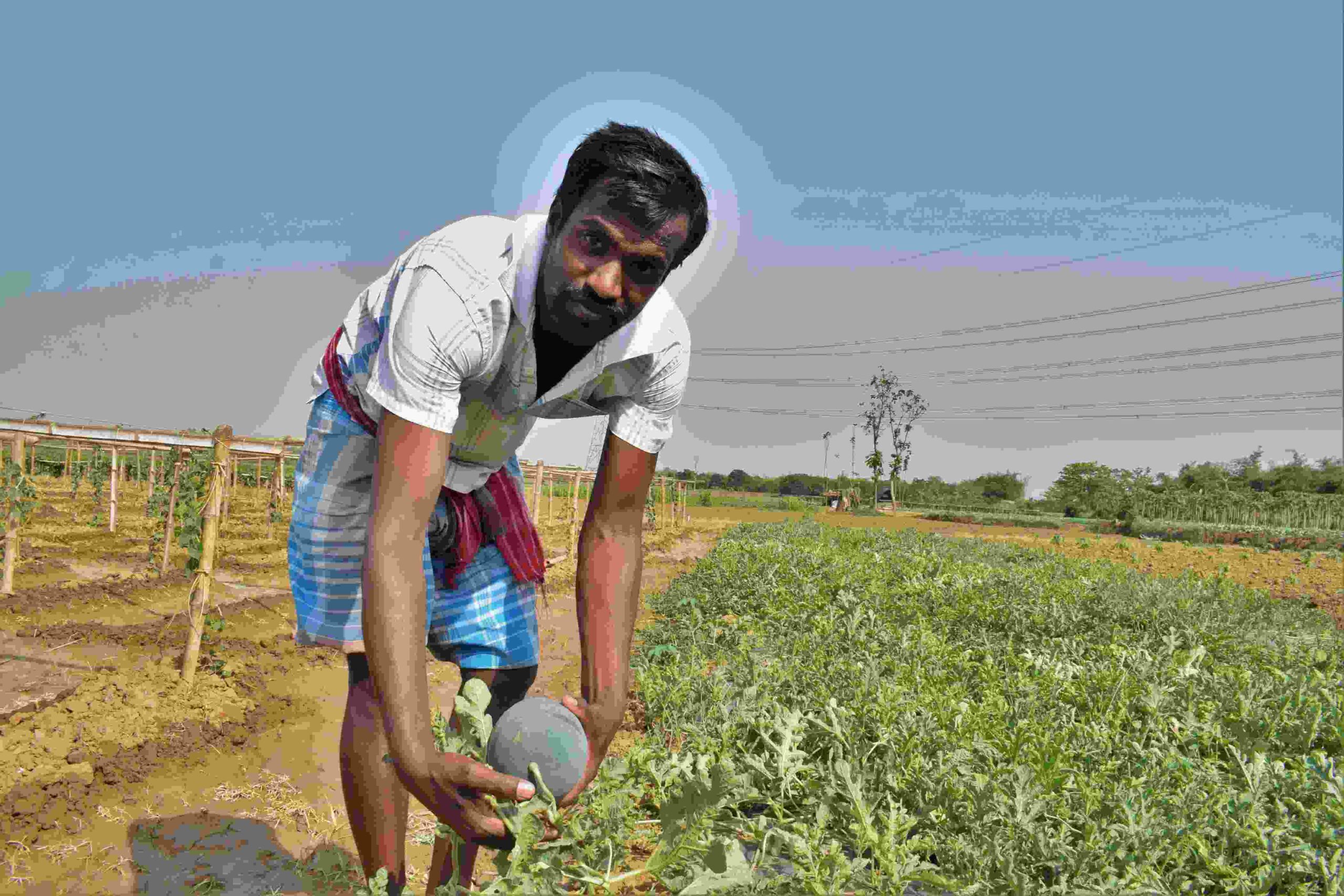Did you know that the refreshing watermelon has a dozen varieties? There are about 10-12 major watermelon varieties available in the markets, including Red Candy — a hybrid variety, Sugar Queen, Sugar Baby, Sagar, Sonalika, Red Chef, etc, with the seedless variety being high in demand.
Red Candy is just one of the kinds grown by 20 farmers at Balagarh Block in West Bengal’s Hooghly district. What’s special about this variety, you ask? They’ve been grown using the ‘poly mulching’ technique for the first time.

The 20 agriculturalists belong to Moraghata and Milangarh village at Bakulia-Dhobapara Gram Panchayat under Balagarh block and expect to yield around 460 quintals or 12,500 watermelons from their respective 20-bigha (about 4 acres) of land.
Under the ATMA (Agriculture Technology Management Agency) scheme, watermelon cultivation with poly mulching method was initiated at Balagarh Block on 15 February 2021.
The farmers of these two villages invested Rs 25,000 per bigha (¼th acre) to cultivate watermelons by applying this technology. Each farmer has harvested around 23 quintals of watermelon in one bigha of land. Their trial formula proved fruitful. They expect to garner a profit of around Rs 50,000 from growing this fruit using the poly mulching technique being provided by the State Agriculture Department.

Sanjay Samaddar, a farmer, says, “We faced few initial challenges while growing watermelons using this technique. For instance, we didn’t know the right measure of water to be sprayed. Plants used to get infected with insecticides. Besides, ‘downy mildew’ is one of the major diseases detected that spoils watermelon plants.”
So what makes this technique successful?

Assistant Director of Agriculture in the department in West Bengal, Dr Somnath Pal tells The Better India, “Agriculture is all about soil and water. But here, water scarcity is a natural phenomenon during the summers. Cultivation hazards include evaporation, leaching and wastage of water.”
He further explains, “So, we experimented with various processes, including poly mulching, which proved most fruitful. poly mulching is about covering the soil with biodegradable polythene sheets, where the seasonal fruit, watermelon, is grown. It’s noticed that 90 per cent of water either evaporates or disappears by leaching or gets wasted. But this technique, which is a recognised scientific method, conserves water.”

Watermelon is a vine plant, the root of which requires limited soil. Its root can grow 6-inches beneath the soil or on the upper part of the soil. It’s important to make sure the water level remains constant within the six inch layer of the soil so that the plant can draw water from this zone. The seed absorbs the least amount of water when planted and the mulching method helps the plant get the required amount of water.
According to Dr Pal, after the soil is prepared, it is covered with the mulching material. The plants are seeded at a gap of one hand’s distance. A cavity is made on the poly sheets to water the plant. This method decreases the rate of water evaporation. Up to 15 times more water can be conserved.
A soil-friendly, water-conserving method
In the conventional method of farming watermelons, the land needs to be watered for three hours. While in the poly mulching method, it requires only an hour’s worth of water supply. Experts say, this saves around 60 per cent of water as compared to the regular method of farming.
Secondly, the existing moisture in the soil is retained and barely evaporates. The third pro of using the poly mulching is that the baby plant can be protected from the direct penetration of sunlight, and the chances of growing weeds become immaterial. Moreover, the growth of weeds can be controlled.
Sanjay acknowledged that poly mulching is a sustainable agricultural technique for the future. The biodegradable polythene is available in the market. Priced between Rs 2,500 and Rs 3,000 per reel, it weighs 11 kilos and can cover 10-katha (half-bigha) of land.

“Watermelon is a cash crop which is now grown here in place of paddy in the summers. The poly mulching process helps keep the moisture level of the soil intact, which would otherwise dry up due to the soaring temperatures. This also helps enhance the root binding capacity by which the soil erosion can be prevented,” he adds.
From seedling to harvesting, the cultivation period is between 15 February and 30 April, which can be extended till 10 May. “Around 12,500 watermelons are expected to grow on per bigha of land. A full-grown fruit can weigh between 2kg and 4kg,” Debasish Samaddar, another farmer says.
“We are encouraging farmers to adopt those crops that can be cultivated in small quantities of water. The cultivators have dropped seeding Boro paddy because it demands massive quantities of water,” Dr Pal states.
Notably, the groundwater layer is depleting fast below the mark. The West Bengal Agriculture Department conducted a survey across several districts, including Hooghly district, in 2019-20 and found that the water level is depleting briskly. The situation at Hooghly and Burdwan districts is not alarming. But the Groundwater Level Survey conducted by the State Agriculture Department reveals that in the coming 50 years, these districts might face conditions of famine.
The data also exposes that agricultural land is sharply declining owing to societal development. Moreover, the scarcity of water, including potable water, is clearly visible.
“The deficiency is visible in the agricultural sector, too. The water quantity required for plants is insufficient. We need to take agriculture forward because it is the backbone of our economy,” states Dr Pal.
The State Agriculture Department is trying to spread this technique in the neighbouring district of Purulia and Bankura. Their aim is to generate awareness among the farmers, so that most of them can procure benefits through this method. The efficiency can be augmented if drip-irrigation is amalgamated with poly mulching technique. Every plant will receive equal water quantities. This combined concept will be proved productive in the future.
Meanwhile, the farmers have fixed selling prices at Rs 5-10 per kg, wholesale rates. The marketplace is within 3-km range in Guptipara , where buyers have already started bargaining for the fresh watermelon produce.
(Edited by Yoshita Rao)
No comments:
Post a Comment